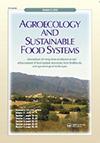Evaluating Yam-Based Cropping Systems Using Herbaceous Leguminous Plants in the Savannah Transitional Agroecological Zone of Benin
引用次数: 6
Abstract
Traditional yam cropping systems are based on shifting cultivation and slash and burn which lead to deforestation and soil degradation. The objective of this study was to determine the productivity of cropping sequences with herbaceous legumes and their effects on the profitability of subsequent yam. We compared smallholders' traditional cropping sequences (one-year fallow of Andropogonon gayanus, maize) with those using herbaceous legumes (maize-Aeschynomene histrix, maize-Mucuna pruriens var utilis) during 2002–2005. Highest dry mater, nutrients recycled, and net nitrogen contribution were found with Mucuna preceding yam (P < 0.001). Highest net revenue and return on investment were achieved in yam-based with legumes.贝宁萨凡纳农业生态过渡带以薯类植物为主的豆科植物种植系统评价
传统的山药种植系统以轮作和刀耕火种为基础,导致森林砍伐和土壤退化。本研究的目的是确定草本豆科作物种植序列的生产力及其对后续薯蓣盈利能力的影响。在2002-2005年期间,我们比较了小农的传统种植序列(一年休耕,玉米)和使用禾本科豆科作物(玉米- aeschynomene histrix,玉米- mucuna pruriens var utilis)。干物质、养分回收量和净氮贡献均以甘薯为优先(P < 0.001)。以薯类为主的豆科作物实现了最高的净收入和投资回报。
本文章由计算机程序翻译,如有差异,请以英文原文为准。
求助全文
约1分钟内获得全文
求助全文

 求助内容:
求助内容: 应助结果提醒方式:
应助结果提醒方式:


